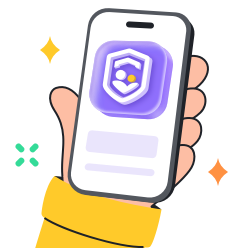Glympse has become a go-to app for sharing your location quickly. It’s simple: you send a link, and someone can see where you are in real-time. No need to create an account or stay signed in. It’s fast, convenient, and works well for everything from meeting friends to keeping tabs on your team.
But convenience isn’t the same as safety. If you’re using Glympse to share your location, especially during meetups or work check-ins, it’s worth asking how well the app protects your data. In this review, we’ll look at Glympse’s safety features, privacy controls, and where it may fall short.
What is Glympse?
Glympse is an app that makes it easy to quickly and safely share where you are at any moment. It helps you send a map showing your real-time location to people you choose for up to four hours. When this feature is used, recipients can still watch the sender’s real-time location, although it does not record the sender’s movements after a session.
For example, if there is a large group gathering, Glympse allows friends to better locate one another. They can rely on it to track their family members during daily commutes, traveling, or whenever they’re out late at night.
In their workplace, drivers and service technicians can use the app to let partners and clients know precisely when they will arrive.
Glympse helps people share their location easily and quickly, always ensuring their safety, because they decide who can see them and for how long.
Key features of Glympse
What makes Glympse different from other similar apps is its mix of valuable functions, user control, and simplicity. Amateur and professional users will enjoy how simple and safe the app is for group access at any moment.
1. Real-time location sharing
Glympse’s main function is to give your friends and family alive and immediate look at your location. Right after sending a Glympse, the recipient gets a live map showing where you are and the way you travel, along with the shown speed (if it is being captured).
In busy places, at waiting times, and when tracking a delivery, ideas like these help a lot. Unlike a pin from GPS, Glympse shows you where someone is at any given moment, so you can follow their movement and predict when they will arrive.
2. No need to create an account
Unlike most apps Glympse allows you to share your location right away, without setting up an account. People viewing a Glympse link don’t have to be registered or download the app — they can just open it in their browser.
That’s why Glympse is ideal for handling short and one-time communications. In that way, someone who doesn’t use the app can still get your ETA from you.
3. Time-limited sharing
Glympse values privacy highly and allowing users to share their locations temporarily is one of its strongest protection features.
When you use Glympse, you can choose how long your location will stay visible—up to four hours. After the given time ends, Glympse stops sharing your location.
With time-limited sharing, people can let others know where they are when it’s needed and roll back the sharing once the need is gone.
4. Privacy control
Privacy is a major focus at the heart of Glympse’s design. You can always decide who knows your location, for how long, and what details they’ll have.
Unlike other social tracking apps that keep tracking and sharing your information without notice, Glympse prioritises privacy control.
There’s an option to stop recipients from sharing your Glympse, so they cannot pass it along to others unintentionally.
5. Integration with maps and navigation
Thanks to its integration with Google Maps, Apple Maps, and Waze, Glympse improves the user experience. When you share a Glympse, the location, route you’re traveling on and your predicted arrival are visible, all shown on standard navigation maps.
As a result of this integration, professionals in industries such as delivery, field service, or transportation can monitor shipments in real-time. Both customers and team members can now track the GPS and get ready for when the vehicle shows up.
Get a clear view of your child’s whereabouts with FlashGet Kids
User interface and experience
Designers made sure the Glympse app’s UI is simple, helping both skilled users and those looking for easier options. Since the design is simple and the icons clear, users can easily update their friends with their location. Glympse may not have eye-catching style, but its top priority is being easy to use and that’s what its users want the most.
Navigation and interface design
When the app is opened, users immediately see a clear home page with the choices to send their location, check received Glympses, and pick from recent contacts or events.
The “Send a Glympse” button appears prominently so users can easily pick those they want to share with, and put in extra messages or details about where they are going.
Browsing the map is simple and you can do it interactively. You can see where you are, which way you’re going, and how you are moving in real-time. No matter if you are viewing a map, tapping a button allows you to zoom, adjust, or stop sharing your location. Since the app works with your existing contact list, sending a Glympse to people you talk to often is very easy.
The Glimpse app is efficient, reactive, and is therefore most useful for those who want immediate sharing, correct location tracking, and who don’t wish to be seen for long periods.
Is Glympse safe for kids?
No, Glympse is not entirely secure especially when users can’t manage privacy settings effectively. Even though it has safety features such as restricted sharing and encryption, it is possible for things to be shared wrongly or see accidental disclosure.
Let’s look at the top considerations users need to keep in mind before using Glympse for location sharing.
1. Shared links can be forwarded to unintended recipients
It’s possible to share your location immediately with anyone by creating a specific link using Glympse. Nonetheless, unless manually turned off, anyone can copy the link and forward it to someone else without the sender’s knowledge. So, those who shouldn’t have access may still see your location when sending the message.
2. Privacy relies heavily on user settings and awareness
Any safety features do not protect you once your trip time ends by default. If people do not set Glympse for a short time, enable no forwarding, or share it with someone unintended, it may be seen for longer. It is entirely up to the user to set privacy controls correctly, yet not everyone does this.
3. Not suitable for long-term or protective monitoring
Unlike other apps, Glympse isn’t designed to track users, notify others, or set up boundaries. As a result, using unlimited traffic can make it weak for monitoring kids, tracking security, and overseeing those who need reliable supervision.
4. No two factor authentication or login security
Since you don’t need to log in, the app can’t require two-factor verification for extra security. If you have a link, you can open it whenever you like. In certain important or confidential areas, this unprotected access could become a major security issue compared to securing user identities through application access.
5. GPS and network limitations can lead to inaccurate location sharing
The app depends on GPS and a strong internet connection to operate properly. Occasionally, when the signal is poor or there are many tall buildings nearby, your location may be wrong, stuck, or slower to update. As a result, people could misunderstand each other, miss each other at meetings, or face confusion when using Glympse for emergency situations.
Pros and cons of Glympse
Glympse has positive and negative aspects to it that all potential users should know about before making an informed decision. To help you make the right choice, we have identified pros and cons to make decision making easier for you.
Pros of Glympse
There are a lot of people who appreciate Glympse because it’s quick and easy to use. Unlike other apps where both users must have the same software and sign up, Glympse lets you share your route automatically with a link that needs no download or signup from the recipient.
- Easy to use: Using the app is simple and doesn’t confuse users with a lot of options.
- Quick setup: No registration is needed, so you can get started instantly if you want.
- Lightweight and responsive: It works well and doesn’t consume much memory or battery power.
- Privacy-conscious design: People can decide for themselves how long their exact location is shared with others.
- Cross-platform compatibility: You can use it on Android, iOS, and even a smartwatch.
Cons of Glympse
While the app is fairly functional, there are reasons that might make users question using the app. These are some of the negative concerns that most users have when it comes to using Glympse.
- Outdated user interface: Even though the app is useful, some people think the layout looks old compared to other apps.
- Occasional bugs or crashes: Users on some Android models have complained that they experience either crashes or inaccurate updates for their location.
- Late and inconsistent real-time tracking: A handful of users say they’ve noticed that their location updates can sometimes take time, especially where the GPS or internet connection is weak.
- Limited features compared to competitors: Unlike other apps, Glympse does not track your location constantly.
Get started with Glympse on Android and iPhone
To get started with Glimpse you need to know the exact steps you need to follow from the download to installation stage. With these steps, you’ll learn how to access and use Glympse whether you’re an Android or iOS user.
Step 1. To access Glympse, go to the Google Play Store for Android users or the App Store for iOS users.
Step 2. After downloading the app, allow notification and location permissions.
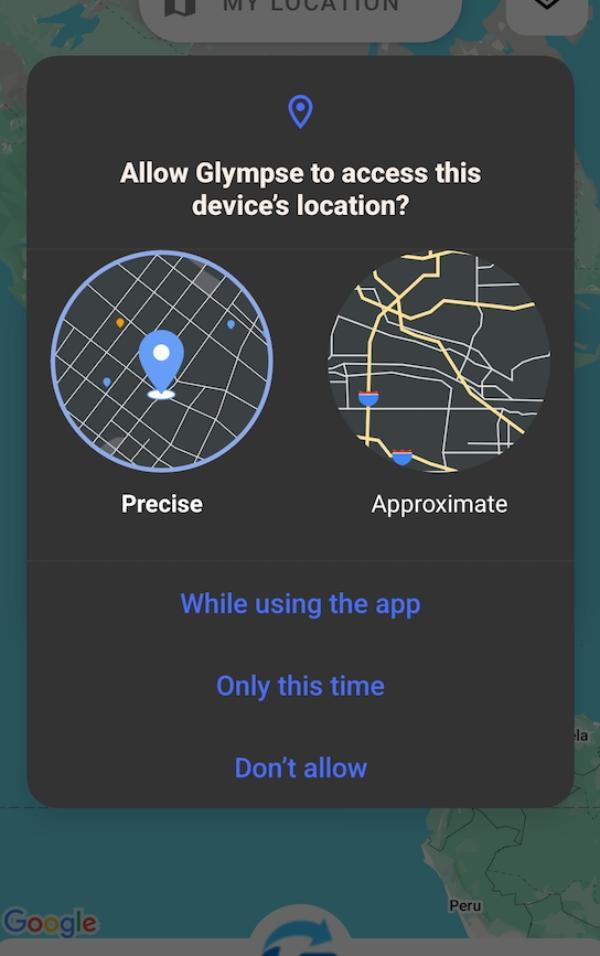


Step 3. Now that you’re in the app, click on the “+” section or “Share Location” button to start a new Glympse.
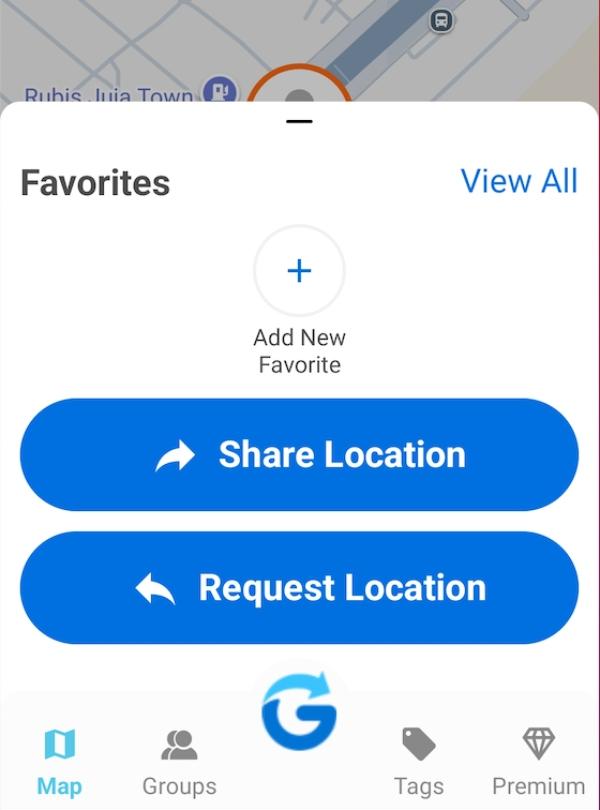


Step 4. Set how long you want to share your location, which is usually between 15 minutes and 4 hours.
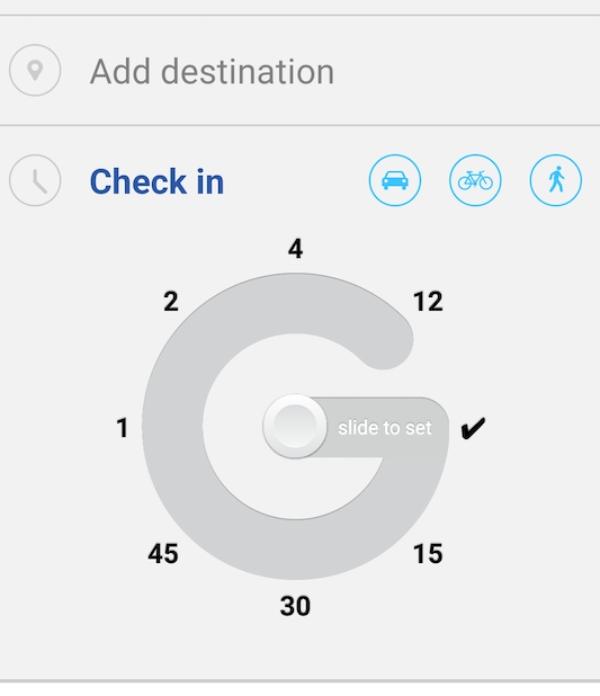


Step 5. Choose the person you want to share Glympse with from your contacts.



Step 6. Select “Share” to send to the recipient.
Is Glympse worth it?
Depending on your needs or situation, Glympse might be good or bad for you. The app is useful for sharing a location for 15 minutes to 4 hours.
However, if you’re looking to share locations for more than 4 hours, you might consider using other apps. There are parental control tools with incredible tracking and monitoring features that can help you keep track of your kids.
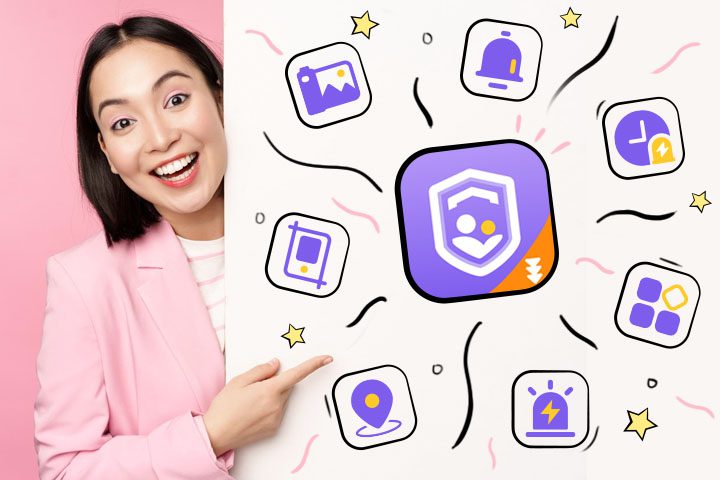


One such app is FlashGet Kids, which not only tracks your location in real-time but also has an alert feature. FlashGet Kids also has features like geofencing, which sets boundaries that kids should not bypass.
Here’s a comparison table to help you know how Glympse compares with other similar apps:
| Features | Glympse | Google Maps | Life360 | Find my(Apple) | FlashGet Kids |
| Requires account | No | Yes | Yes | Yes | Yes |
| Temporary sharing | Yes(up to 4 hours) | Yes | No(continuous only) | Yes | Yes |
| Live ETA/location sharing | Yes | Yes | Yes | Limited | Yes |
| Geofencing | No | No | Yes | Yes | Yes |
| Location history | No | Limited | Yes | Yes | Yes |
| Parental controls | No | No | Some(premium) | No | Yes |
| Alerts | No | No | Yes(premium) | No | Yes |
| Cross platform | Yes | Yes | Yes | iOS device only | Yes |
| Best for | Occasional sharing | General use | Family tracking | iOS user convenience | Parents, guardians, and child safety |
Conclusion
Although Glympse allows you to share your location without creating an account, it does not provide robust safety, monitoring, or long-term tracking features. However, it will be helpful if you just want to share your location or arrange a random meetup.
But if you are more concerned about your child’s safety, location history, or immediate notifications, FlashGet Kids is your best option. With FlashGet Kids, you can access features like geofencing, alerts, and usage reports that most apps don’t have.

